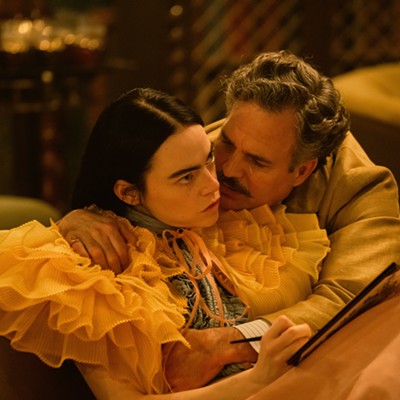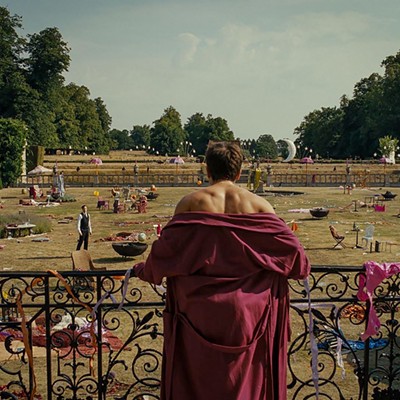This is still bad, but it's better than it should be. You go into something like "Fifty Shades of Grey" with a mental Venn diagram plotting a point where "Unbelievably Stupid Horseshit" dances incoherently with "Hot, Filthy Sex," but this is not quite either, so it cannot quite be both. While the book—a runaway bestseller that launched a 100 million bubble baths—is by most accounts diabolically bad literature, the film adaptation does not plumb those depths. Neither, however, is it great erotica.
It's the story of a good girl seduced by a powerful, handsome man and made to do things she never would have otherwise done. Anastasia Steele (Dakota Johnson) is an English major, a wallflower and too shy to get what she really wants. Christian Grey (Jamie Dornan) is none of those things and always gets everything he wants. For the purposes of the movie, really all he wants is Anastasia, though the film struggles to explain his single-minded fixation.
Dornan is, predictably, monochromatic. He's effectively here to be a well-groomed six pack, one that doesn't embarrass itself when it uses its big words. So, whatever. But Dakota Johnson? The daughter of Don Johnson and Melanie Griffith has created an actual flesh-and-blood character here, one that is instantly and continually believable. She displays good comedic timing, with alternating notes of nervousness and nonchalance, on top of the fearlessness that comes with being tied up and spanked on screen. It's a much better and more vulnerable performance than you'd think this film would deserve. Or get, frankly.
While easy to dismiss before you see it, "Fifty Shades" is better than just about every Nicholas Sparks adaptation, occupying the same strata as the excusable "Twilight" movie, whichever one that was. Sam Taylor-Johnson, the British director of the young John Lennon biopic, "Nowhere Boy," seems to have made the decision to make this film as Christian Grey. She employs a very controlling style, one that keeps the uncomfortable scenes lingering on screen a lot longer than the more relaxed moments, with lengthy descriptions of dominant/submissive relationships coming at the expense of the book's ersatz dialogue. This is not a bad thing. In fact, beyond Dakota Johnson's surprising performance, the movie's very frank and serious tone when the dominant-submissive relationship is discussed is its biggest selling point.
The sex, on the other hand, is prettytame. Tons of skin, a few tie-up scenes, a couple spankings, but hardly the bacchanal of carnal exploits you might expect. Of course, if it were that, the dark tone would look even more pretentious and Johnson’s movie-saving work wouldn’t have as much to counterbalance.
Another point, too, is that while master-slave relationships aren’t very common in mainstream fiction targeting women, sex on screen has largely been exhausted by this point. Porn is free on the Internet anytime you want it and this generation’s Peter Pan received analingus on HBO just a few weeks ago. It’s just difficult to surprise a viewing audience with thrusting naked bodies anymore. So, wisely, “Fifty Shades of Grey” really isn’t about that, nor does it get any considerable mileage from it. Its chief concern is the relationship that surrounds the sex, specifically the trust and emotional limits of that relationship.
But does that mean “Fifty Shades of Grey” is a good movie? Nope. It’s still dumb, there’s not any reason whatsoever for these characters to be magnetized by one another and only one actor truly shows up for work. But it’s as good as it could ever be, and given how bad it rightfully should have been, that at least makes it successful.










